Av Chris Grinter, on April 19th, 2011
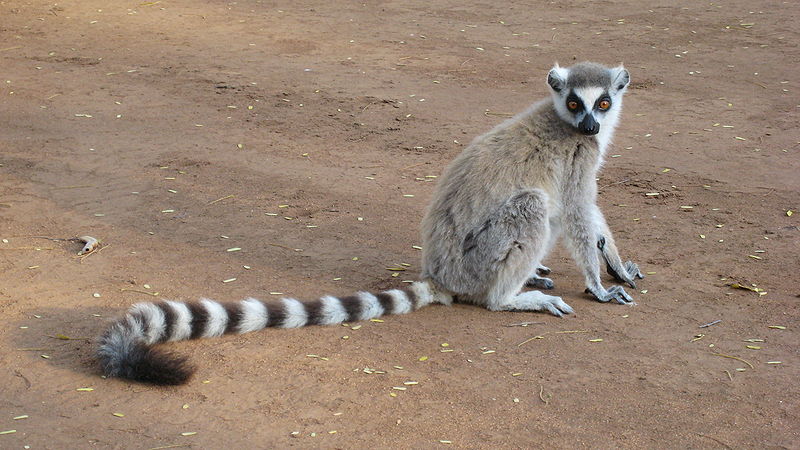 Source: Wikipedia It turns out that Richard Branson has a new idea; to save the ring-tailed lemur (Lemur catta) förbi importing them to his private British Virgin Island. As the article points out Branson spent millions of pounds and years of effort to turn the island into “the most ecologically friendly island in the world”. But it appears Mr Branson has decided to forgo conservation science and rewrite it in a more PR friendly way. In come the lemurs despite the cautions of his own ecological assessment because he wants “…to create a second island habitat and the conditions on Moskito are perfect.” Perhaps Branson has a bizarro world dictionary where the definition of the word perfect is “something completely dissimilar from the original”.
OK sure, at first the idea sounds like a fine one – the lemurs are endangered, why not try to give them a second wild refuge? Väl, Dr James Lazell of the Conservation Agency has had 31 years experience in the Virgin Islands and has pointed out that “Lemurs are agile, dexterous, aggressive, omnivorous animals that could have a detrimental effect on these simple island ecologies. They eat absolutely everything – lizards, fruit, roots, insekter, birds’ eggs.” Oh but don’t worry, nothing bad can happen when you introduce primates to an island (introduced primates devastate Florida Key). Branson knows that the lemurs will only “take the odd gecko” (like the rare endemic dwarf-gecko Sphaerodactylus parthenopion), not to mention they probably won’t spread to other islands since they “hate swimming” (ring tailed lemur swimming).
So why then the ring-tailed? Not because it is the most endangered (det finns massor of other more endangered lemurs), but because it is the most iconic. That is what really drives me up the wall about this ridiculous idea. Not only is he naively introducing a possibly invasive species into a sensitive island habitat – but because he is spreading a false message of conservation. Like a slow child Branson has rushed to the ring-tailed to save it while completely missing the entire idea behind conservation. The ring-tailed is a flagship species, one that draws attention to the devastation that is occurring in Madagascar. One cute cuddly animal to represent the staggeringly unique and diverse habitats of its homeland. But not if Richard Branson has anything to say about it. Why bother protect Madagascar when you can swoop in and create a new home for a primate everyone loves? Phew, crisis averted. Richard fiddles while Madagascar burns.
I suspect this freakish island zoo is simply masquerading as conservation and the real incentive behind it is commercial. Over the next few years there will be a handful of “luxury, carbon-neutral homes built on the island”. A pretty brilliant scheme to incentivize the purchase of homes that undoubtedly will cost tens of millions of dollars each – and you can pretend to feel good about protecting the world while you do it. After all the Virgin Islands lack any charismatic wildlife; nature sure does a terrible job of creating a billionaires wonderland. What comes next to the island?
Maybe… just maybe… Branson has Dr. Moreau moving in first.
Av Chris Grinter, den 18 april, 2011 För några veckor sedan blev jag inbjuden att gå med i en Berkeley entomologikurs ute på fältet för helgen. Vårt mål var Blue Oak Ranch Reserve; en av de nyaste reserverna till University of California-systemet som ligger strax utanför San Jose på Mount Hamilton (kartan nedan). Det var en gemensam spindel- och skalbaggeklassresa, värd av Charles Griswold och Dave Kavanaugh respektive. Och trots en frost på lördagskvällen lyckades vi hitta några intressanta insekter. Du har redan sett mina bilder av Scaphinotus (Carabidae), men här är en större uppsättning bilder från både mig själv och kollega och medbloggare Tamas Szüts.
 Staphylinidae: Aleocharinae? 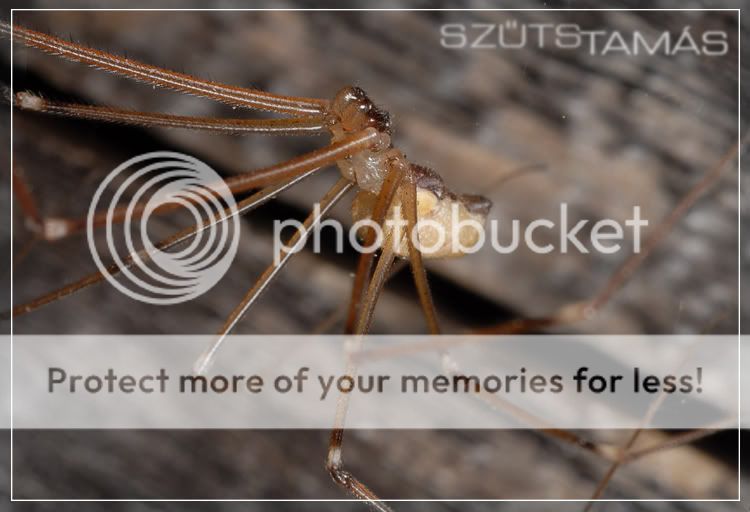 Pholcidae : troligen Pholcus sp. 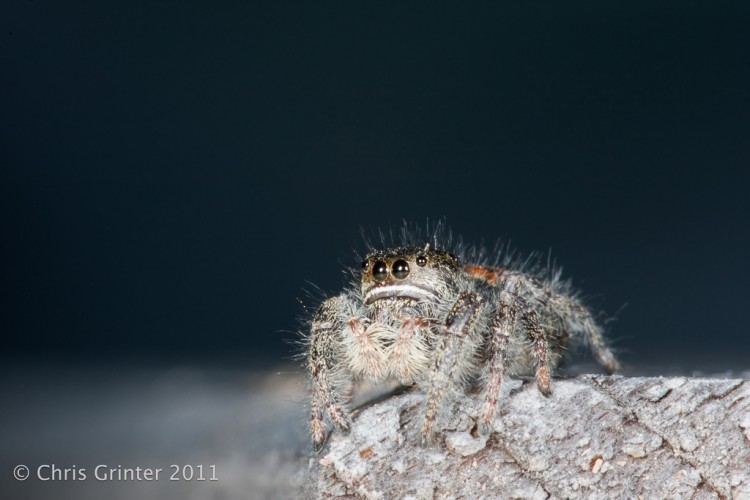 Salticidae: Phidippus sp. Continue reading Blue Oak Ranch Reserve
Av Chris Grinter, den 6 april, 2011 OK – några ursäkter för att inte ha fulla bilder * ännu * av larverna i fråga (Det gör jag om några dagar!). Under helgen var jag ute med en grupp Berkeley-studenter på Mount Hamilton och doktorand Meghan Culpepper samlade några arter av Scaphinotus och några larver! So the specimen from Monday was indeed the larvae of a Scaphinotus beetle feasting inside the shell of a native terrestrial snail. This challenge was a hard one since these predatory Scaphinotus larvae are rarely encountered and there are zero images of out there – and none of them feeding. Better luck next time!
For now, here is an undetermined Scaphinotus species. In the coming weeks I will have 4-5 species photographed and identified (by Meghan) – and the larvae will have to be sequenced for species ID. Håll ögonen öppna.
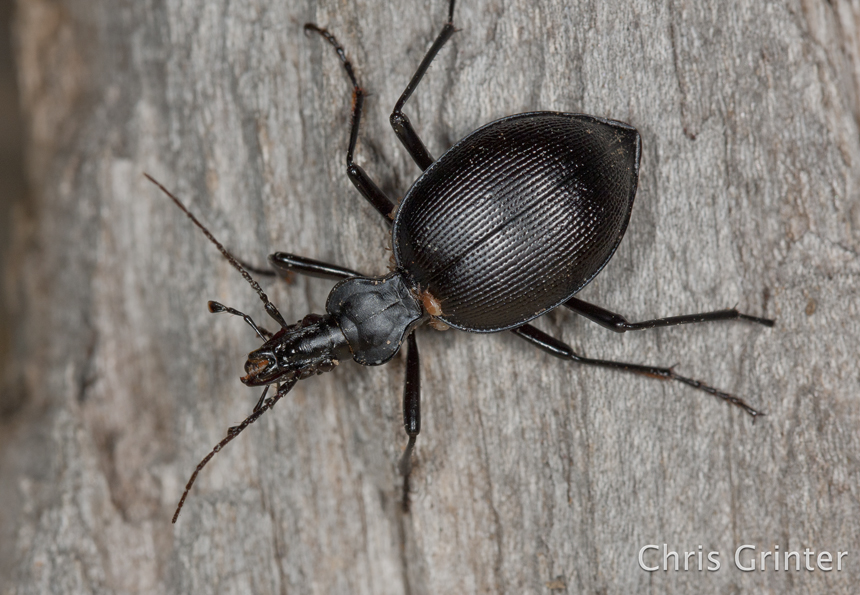
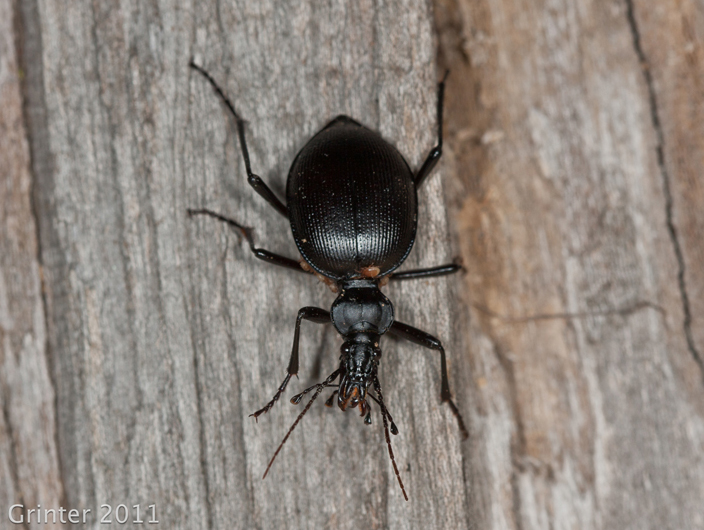
Av Chris Grinter, on April 4th, 2011 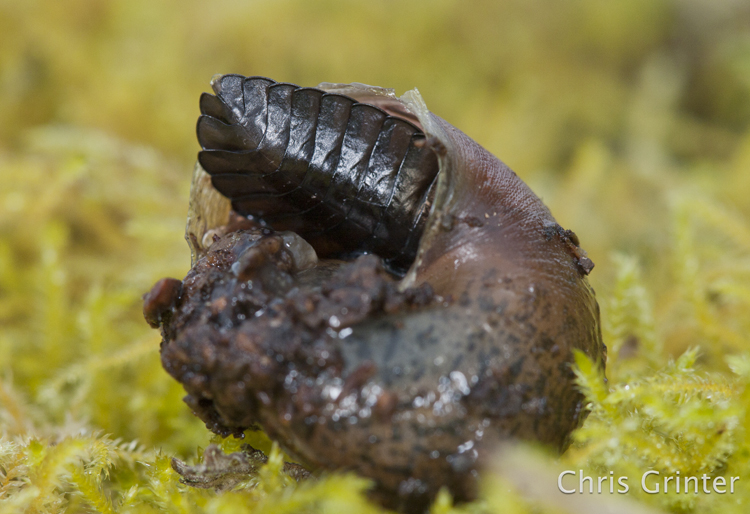
Came across this guy while out in the field the other day, what’s going on here? Points awarded for Order/Family/Genus – but even experts in this group can’t figure out the species quite yet.
(everyone in the field with me should hold their comments until the guesses come in!)
Av Chris Grinter, on March 30th, 2011 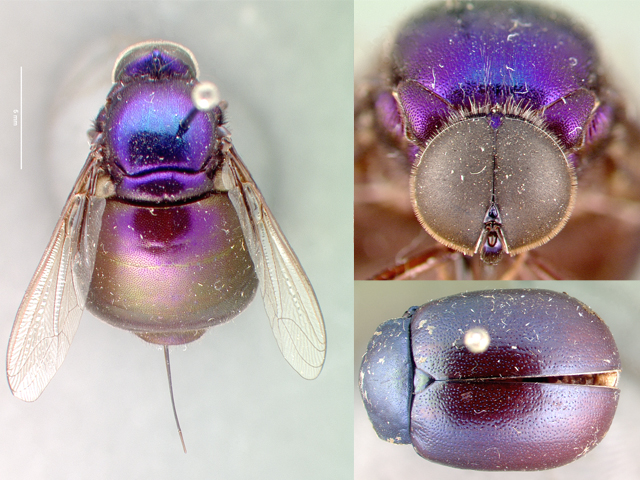 Lasia klettii: Photos by April Nobile, FALL Lasia klettii: Photos by April Nobile, FALL
For the most part flies are not an insect I get overly excited about. Emellertid, the enigmatic family Acroceridae are the exception. I’ll start sharing some interesting genera from time to time – the morphology of the family is amazingly diverse. Most of my days are spent at the museum inventorying our massive collection of over 16,000 Acorcerids (aka small-headed flies). That may not sound all too impressive when you compare it to other more abundant families (and it does pale in comparison to the over 17,500,000 other specimens we do have in the museum); but it turns out to represent many, if not most, av alla known specimens for the entire family. While there are likely large assemblages of these flies in other institutions, the California Academy of Sciences can easily claim the record ever since receiving the collection of Dr. Evert I. Schlinger (who occasionally comes in to work from the museum).
Acrocerids turn out to be a rather difficult group to study because of how rare they are in nature, their parasitoid biology, and how difficult they can be to catch on the wing. Their large thorax is packed with muscles that rocket the fly through the air – so if you don’t catch them at a flower you’re left longing for a Malaise trap. Ev did tell me one story of learning to catch these on the wing in Costa Rica. You stand downwind from a colleague in the field – as soon as someone hears something zip past, you swing wildly hoping to snare the fly by chance… it does work every once in a while. These flies are also the only known endoparasites of adult spiders (there may be a record of a Tachinid…). The above genus, NeoLasia, is a parasite of Theraphosid tarantulas (something like Aphonopelma). As a larvae the fly works its way up the legs of a spider and burrows into the abdomen where it then settles in next to the book lung and pokes a little breathing hole. Then it waits patiently for the spider to near maturity. With female tarantulas, the fly could be dormant for decades. Eventually something akin to the movie Aliens happens and the larvae feeds on the internal organs of the spider then emerges to pupate. But figuring out whether or not a spider has a parasite is impossible without a dissection – so large collections of live spiders must be maintained to obtain host records. Parasitoid biology is just so cool.
The above specimen (Lasia klettii a new, unnamed, arter) was collected in 1977 by Schlinger near the town of Alamos, Mexiko – on flowers with the likely mimic model, a Chrysomelidae beetle (beetle people, any ideas beyond family?).
Av Chris Grinter, on March 24th, 2011 Better be careful of what you do while out in the countryside. Farms can be dangerous places, especially if you’re a photographer. Proposed legislation in Florida, titled simply “farms”, is attempting to make photography or drawings in, on or av a farm without explicit written consent a first degree FELONY (up to 30 years in prison). What could possibly be the justification for this legislation? Journalist Barry Doyle suggests the good Senator is tightly in the pockets of Agribusiness – looking out for those poor farmers who are targeted by animal rights groups or even worse – human rights groups! I tend to concur, this legislation is a disgusting piece of corruption. It gets pretty bad:
(2) A person who photographs, video records, or otherwise produces images or pictorial records, digital or otherwise, at or of a farm or other property where legitimate agriculture operations are being conducted without the written consent of the owner, or an authorized representative of the owner, commits a felony of the first degree…
I strongly encourage any of my Florida readers to write to Senator Norman and express your absolute disgust in his legislation.
14031 N. Dale Mabry Blvd.
Tampa, FL 33618
(813) 265-6260
Senate VOIP: 41200
I also encourage everyone else everywhere else to write to your US representative and exclaim your outrage over this possible violation of first amendment rights (only a proposed violation at this moment).
And just for good measure, here is a bad cellphone picture I took while in Oregon with lots of farms.
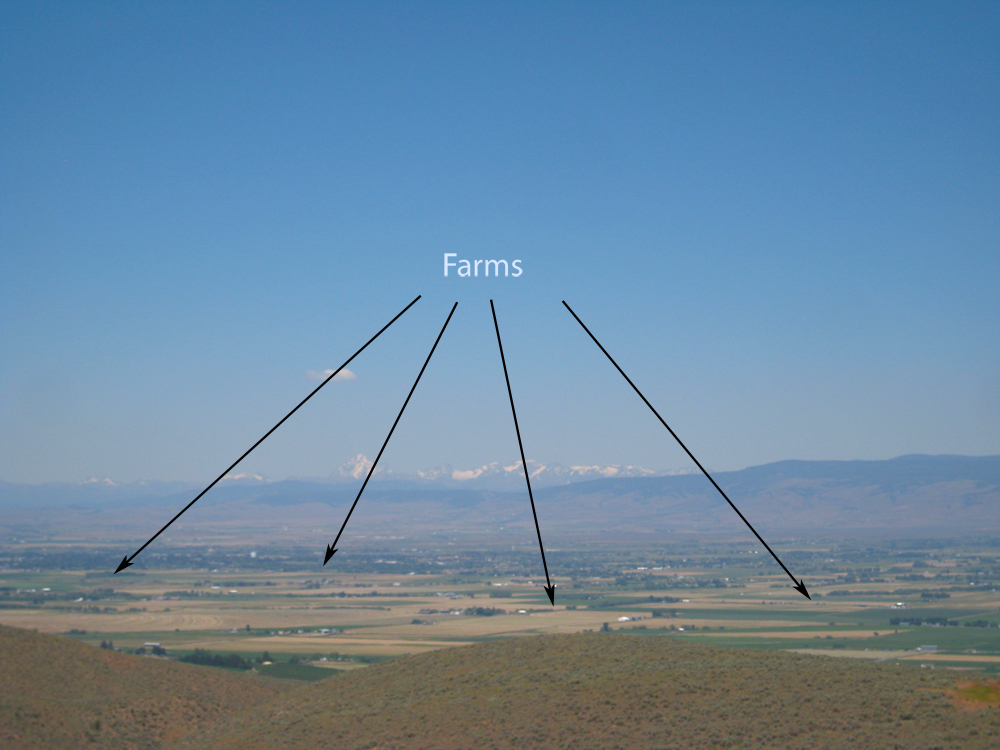
Av Chris Grinter, on March 22nd, 2011 Usually I come across horrible entomology articles regularly enough that I save a backlog for future series. This hasn’t been the case over the last few weeks, I haven’t come across the normal array of terrible media crud. Maybe I just get jaded and stop looking as carefully – but this week I even came across a moth related correction from the Maui News. They fixed their error, but must have deleted the original article…
And for this week I found this article with the image below. Should be pretty easy to spot the weirdness (they do at least manage to point out that the moth is inte the LBAM (light brown apple moth)).
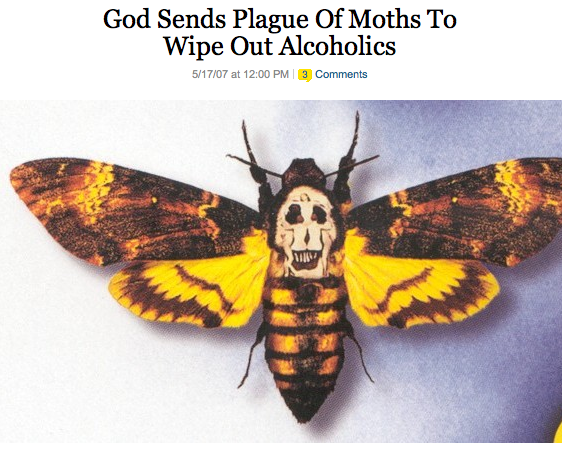
Av Chris Grinter, den 18 mars, 2011 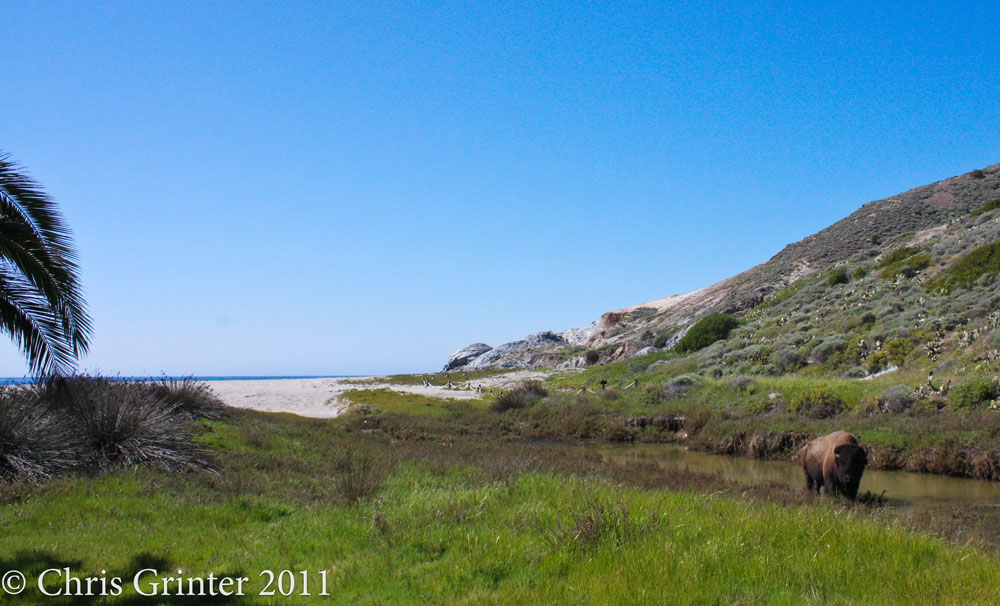
Perhaps the only place in the world where you can find an American bison (vs. buffalo) standing near a beach next to a palm tree. The week on Santa Catalina was an wonderful one, and despite a cool spring with a few unseasonable frosts, some decent collecting was done. Here are just a few amusing images and you’ll notice one thing right away: no fields of wildflowers! As it turns out, almost a century of goat, pig and bison grazing has left mostly grass and cactus on the island. At one point there were over 1000 bison and countless herds of goats; it’s a wonder anything survived at all! I dag, there are thankfully only a modest ~200 bison left that are even on birth control (you guessed it, you can’t shoot the damn things since people “love” them – just like the stupid eucalyptus you can’t cut down). I 1924 a small heard of bison were brought over to shoot the movie The Vanishing American. Naturligt, the project went over budget, the scene was cut and the animals were let loose instead of paying to return them home. 80 years later and you’re left with an island you can only fight to “conserve” and not restore. Sad fact is that we have no clue what the island actually used to be like. It’s even hypothesized that the endemic island fox (of which we saw 6!) was brought over by indigenous peoples a few thousand years ago from neighboring islands. I guess it’s in our nature to mess with our environment.
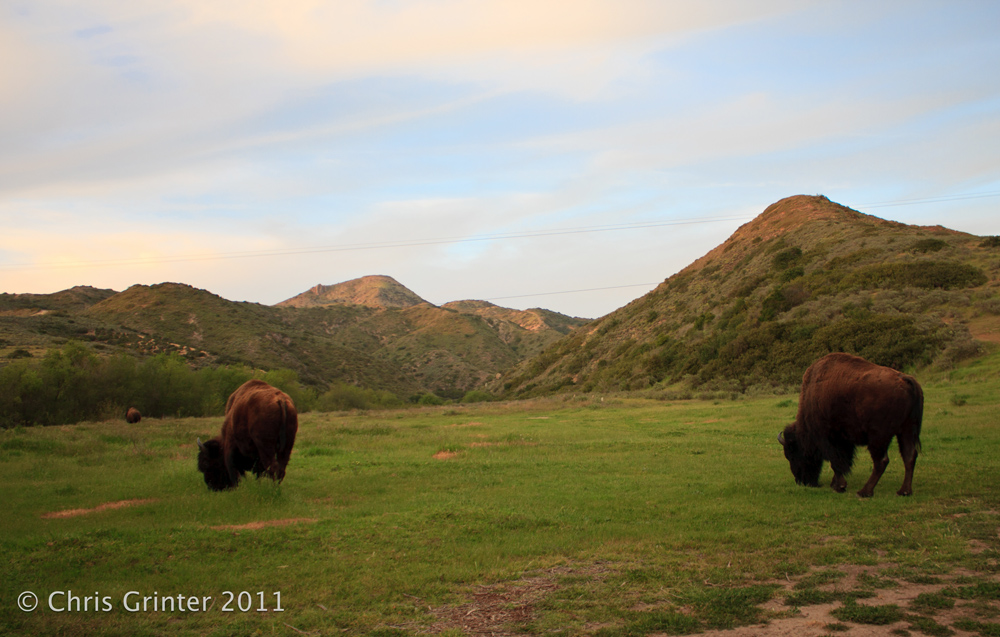
As I was photographing the above, this beast walked up behind me. It wasn’t running, I was!
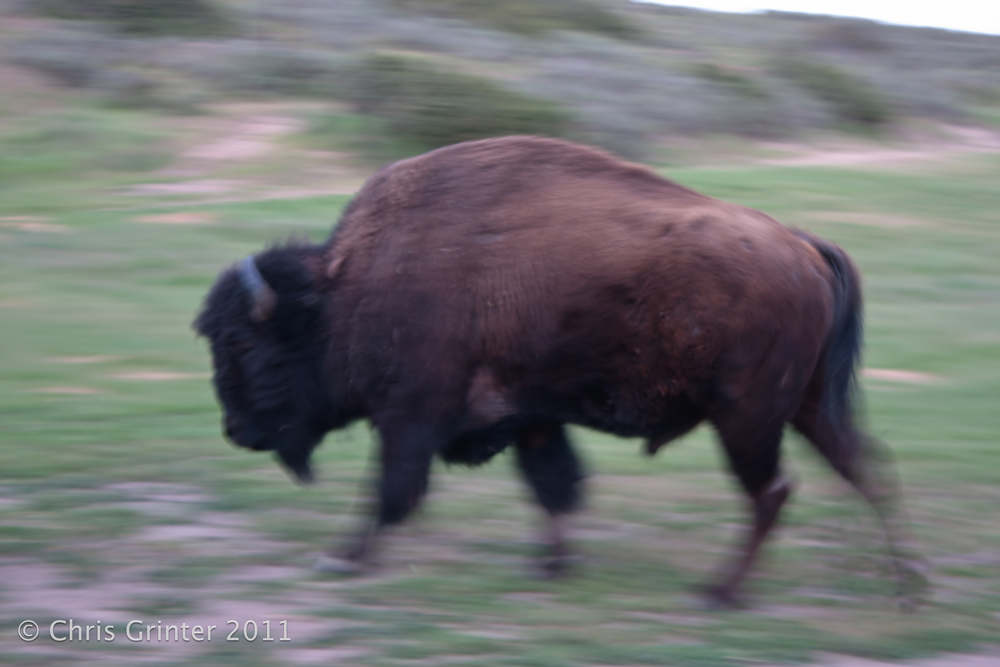
Av Chris Grinter, den 8 mars, 2011 [cetsEmbedGmap src=http://maps.google.com/maps?ll=33.393039,-118.416824&spn=0.359452,0.715485&t=h&z=11 width=600 height=330 marginwidth=0 marginheight=0 frameborder=0 scrolling=auto]
Tomorrow morning I’m off for a 10 dag samla resa ned till Catalina Island. I’ve been lucky enough to be invited to join Dr. Jerry Powell of UC Berkeley on a moth survey, and this will be my first time to any of the islands. Kanalöarna är kända för sin höga nivåer av endemism, och ingen är mer känd än Channel Island Fox. Det finns också en handfull endemiska fjärilar som jag kommer att hoppas att hitta, men åtminstone jag vet att det är vild säsongen och jag har fått min kamera primas.
Jag kommer troligen att ha liten eller ingen tillgång till internet när du bor på ön, så hänga tätt för en vecka. Hade jag planerat framåt skulle jag ha schemalagda inlägg eller en gäst författare! Vänligen håll ögonen öppna för några av mina första bilder av 2011 fältsäsongen.
Av Chris Grinter, den 3 mars, 2011 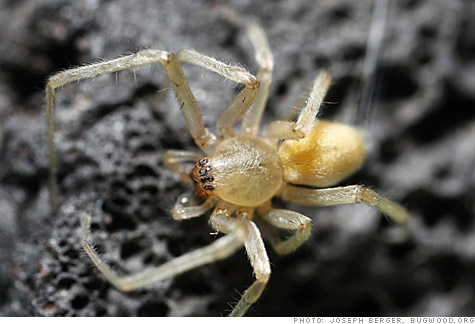
Tydligen något i Mazdan 6 bränsleledningen är varm och inbjudande för den gula säckspindeln, tillräckligt så att de bygger banor över ventilationssystemen 4 cylinderfordon (och inte 6!). Problemet har ansetts vara ett “spindelangrepp” av bilföretaget, och de igensatta ventilationsledningarna kan då leda till en sprucken bensintank och risk för brand.
“En viss typ av spindel kan väva ett nät i evaporativ kapselns ventilationsledning och detta kan orsaka en begränsning av linjen”
Än så länge bara 20 fall bekräftas, men detta problem är tillräckligt produktivt för att det har lett till ett återkallande av över 52,000 sedaner! Jag tycker att det är hög tid att de stora bilföretagen anlitar entomologikonsulter – trots allt, min retainer skulle vara mycket mindre än kostnaden för den återkallelsen…
Jag rådfrågade vårt invånare team av araknologer här på FALL, och bilden ovan verkar vara en säckspindel. Det är för svårt att avgöra från bilden, men det är förmodligen inte ett allvarligt taxonomiskt misslyckande.
|
Skepsis
|














